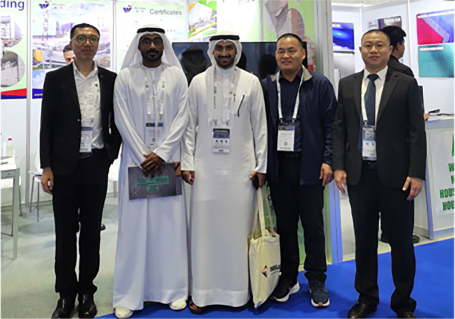
Oct . 13, 2024 21:58 Back to list
hpmc synthesis
The Synthesis of High-Performance Molecular Materials HPMC Insights
The quest for high-performance molecular materials has prompted significant advancements in various fields, particularly in pharmaceuticals, materials science, and polymer engineering. One such innovative approach is the synthesis of Hydroxypropyl Methylcellulose (HPMC), a cellulose derivative notable for its versatile applications. This article delves into the synthesis, properties, and applications of HPMC, highlighting its importance in a myriad of industries.
Understanding HPMC
Hydroxypropyl Methylcellulose is a semi-synthetic polymer derived from cellulose, which is a naturally occurring biopolymer. The presence of hydroxypropyl and methyl groups in its structure enhances its solubility and functional properties, making it a preferred choice in various formulations. HPMC is often used as a thickening agent, emulsifier, and film-forming agent due to its unique characteristics, such as water solubility, biocompatibility, and chemical stability.
Synthesis of HPMC
The synthesis of HPMC typically involves the etherification of cellulose using propylene oxide and methyl chloride. This multi-step reaction begins with the isolation of cellulose, which can be derived from sources such as cotton or wood pulp. The cellulose is then treated with an aqueous alkali solution to prepare it for etherification.
During the etherification process, propylene oxide and methyl chloride are introduced to the cellulose under controlled temperature and pressure conditions. The reaction results in the substitution of hydroxyl groups in the cellulose with hydroxypropyl and methyl groups. The degree of substitution and the molecular weight of HPMC can be manipulated by adjusting the reaction conditions, such as reactant concentration, reaction time, and temperature.
Post-synthesis, the resultant HPMC is purified and dried. This ensures the removal of any unreacted materials and by-products. The final product can be tailored to achieve specific physicochemical properties, such as viscosity and solubility, making it suitable for various applications.
Applications of HPMC
hpmc synthesis

HPMC's multifaceted properties grant it a wide range of applications across several industries
1. Pharmaceuticals In the pharmaceutical industry, HPMC is employed as a binder, controlled-release agent, and coating material in tablet formulations. Its ability to form gels in the presence of water also makes it an excellent choice for hydrophilic matrices, which are crucial in ensuring the sustained release of active pharmaceutical ingredients.
2. Food Industry In food applications, HPMC serves as a thickening agent and stabilizer in sauces, dressings, and dairy products. Its gelling properties contribute to improved texture and mouthfeel, enhancing the overall sensory experience of food products.
3. Cosmetics and Personal Care HPMC is widely used in cosmetic formulations, including creams and lotions, due to its emulsifying and thickening properties. It helps in improving the texture and stability of products, ensuring a smooth application. Additionally, it acts as a film-forming agent in hair care products.
4. Construction In the construction industry, HPMC is utilized as an additive in cement-based materials. It enhances workability, increases water retention, and improves adhesion, which are essential properties for successful construction applications.
5. 3D Printing and Coatings HPMC is finding new applications in the realm of 3D printing and specialized coatings due to its film-forming capabilities. It ensures the uniformity and stability of printed products while acting as a protective layer in various coatings.
Conclusion
The synthesis of Hydroxypropyl Methylcellulose symbolizes a significant leap in material science, illustrating how modifications at the molecular level can yield versatile products catering to diverse industrial needs. As demand for high-performance materials continues to rise, understanding the synthesis and applications of HPMC becomes increasingly pertinent. Its unique properties not only enhance product performance but also provide a foundation for future innovations in various fields, enabling industries to develop smarter, more efficient solutions that cater to contemporary challenges. As research continues, we can expect to uncover even more potential applications and enhancements in HPMC synthesis, reinforcing its critical role in the advancement of molecular materials.
-
Versatile Hpmc Uses in Different Industries
NewsJun.19,2025
-
Redispersible Powder's Role in Enhancing Durability of Construction Products
NewsJun.19,2025
-
Hydroxyethyl Cellulose Applications Driving Green Industrial Processes
NewsJun.19,2025
-
Exploring Different Redispersible Polymer Powder
NewsJun.19,2025
-
Choosing the Right Mortar Bonding Agent
NewsJun.19,2025
-
Applications and Significance of China Hpmc in Modern Industries
NewsJun.19,2025







